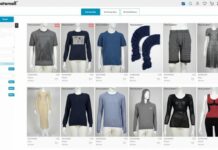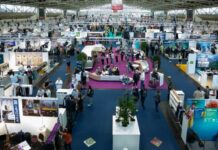Paris
February show hosts 1180 international exhibitors and attracts 30,340 visitors to the Parc des Expositions in Paris.
‘A dynamic fashion industry undergoing a total transformation.’ This was the word at Premiere Vision Paris in February. The international 2025 show season has been the opportunity for grand statements and good intentions across the board, almost a series of manifestos, pulling together well intentioned and closely reasoned ways to rid the textile industry of its excessive impact on world pollution.
This edition indicated money, time and corporate thinking about the industry has been a major feature. PV brought many of these together, companies committed to the textile industry’s eco transformation.

Equally ubiquitous was the word creative to describe the goals of the exhibitors with the establishment of various technical sections. Colour, design and seasonality are as important as ever to define the way things are going for SS 2025 and in many cases carefully calibrated to move from one season to the next.
Smart creation
This is regarded as important, PV bringing together science and art, with many aisles really busy ‘pulling the punters in‘, as one expert put it. Revalued deadstock or surplus materials were a subject of interest, sourced from luxury suppliers like ADAPTA, some originating from LVMH Maisons at competitive prices. Discussions involved the way to handle deadstock, where amounts are usually without minimums, using the latest technology to manage small quantities of good quality but previously discarded materials which are said to represent about 70 per cent of environmental impact.
PV used short Instagram videos to point viewers in the direction of various parts of the exhibition, with students talking to camera in short bursts, this seemed a successful innovation and a way to touch base with younger visitors by explaining the different offers in the halls.
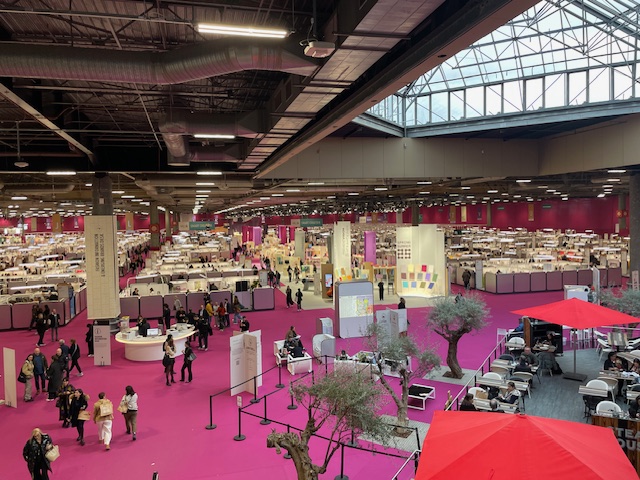
Technical features highlighted the move to make demanding protective and sports clothing efficient, all the time retaining ecological values. Mathematical precision is used for the design of high-end gear, seeking essential water repellency. Multilayers are lighter than ever, supple with bi-stretch.
Fashion looks
This is not a subdued season; designers play with shape and colour and tactile effects; soft wovens, ribbings, fluffed up, lightweight wools, linens made to be decorative and pleasant to wear. ‘The season is more modern and relative; visitors are hit between the eyes when they come.’
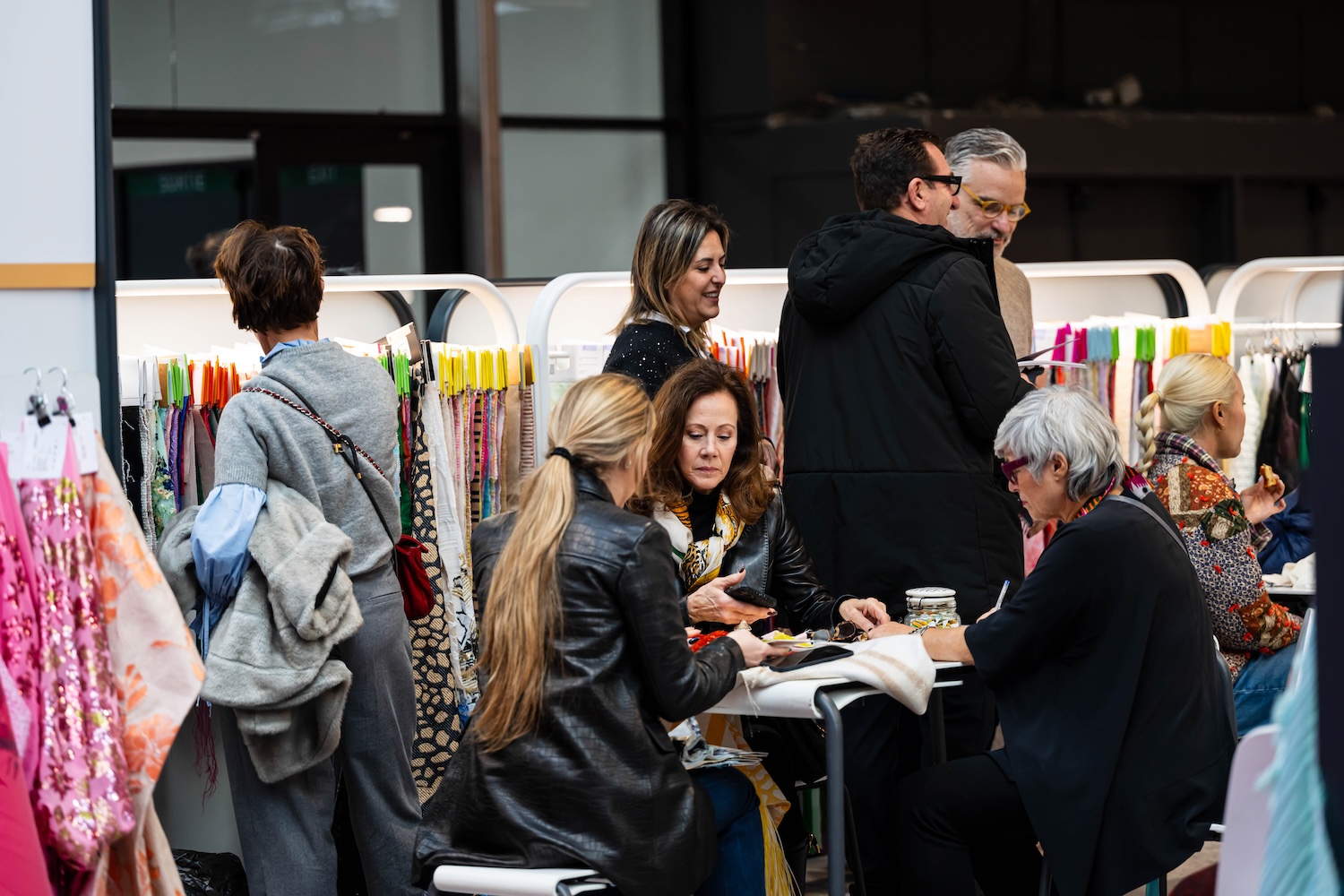
High level tailoring and fabric producers, like the British UKFT contingent, and iconic names from French, Italian, Portuguese and Turkish exhibitors, had reviewed their offer. Using lighter fabrics, soft surfaces and a colour palette designed for multi-use tailored jackets for both men and women. They explored unusual shades, light blues, pinks, ginger designed for a variety of scenarios. Working with weave and knit particularly in fine wool for summer.
Colour and texture
An unequivocal move to colour brought eye catching mono brights dominating the set pieces. In contrast, the effects of light were frequently alluded to, with shiny surfaces to reflect light.
Bright fuchsia pink carpeting set a lively precedent. Lengths of fabric on display showed reds, orange, green, yellow an eye-catching collections of single coloured brights elsewhere, spiky prints with an aura of cinematic magic., many motifs hyper pigmented as well as delicate neutrals.
Large canvases
Most noteworthy were large florals and also busy backgrounds with minute flowers, with inspiration from colourful under-water corals, or jungle leaves with applique shiny fruits. Super bold, primeval shapes, uneven hand drawn shapes gave large and sweeping scope to designers.
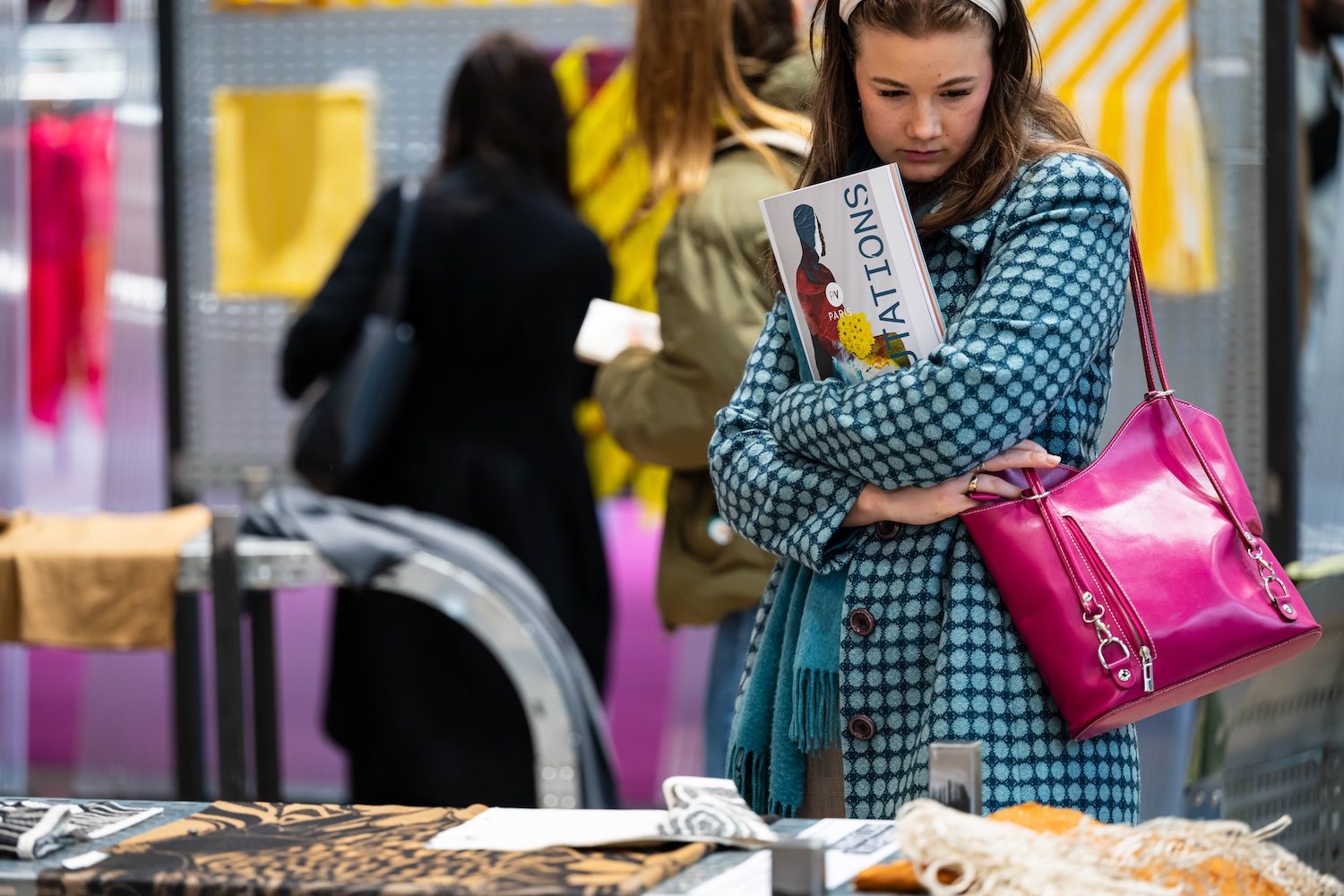
Another development was colour used in harmony for washout effects, for example délavé linen fabrics, experiments with white and colour pigmentation, for both city and casual wear.
Leather branching out
Leather made a strong fashion bid outside its traditional areas with soft colours. Entry into chic sportswear is described as a new move, where leather of various kinds is mixed with other materials such as knit, wovens and stretch fabrics.
Spotlight on luxury
Fashion jewellery and leather goods and footwear at Maison d’Exceptions included Cecile Feilchenfeldt knitwear studio in Paris, jacquards and circular knits reflecting Cecile’s background in costume and set design at la Comedie Francaise and Zurich opera. PV’s major luxury theme Metamorphosis pointed out artificial looks, taking features like pleats and textures, making reptilian skin effects or dark and bright teamed together for contrast.
Yarns
Artificial and synthetic yarns face up to competition from naturals, countering by circular manufacture, high performance, recyclable constructions. ‘The only way to sell manmade is by stressing eco or recycled, biodegradable qualities’. Spinners and fibre specialists are developing new approaches.
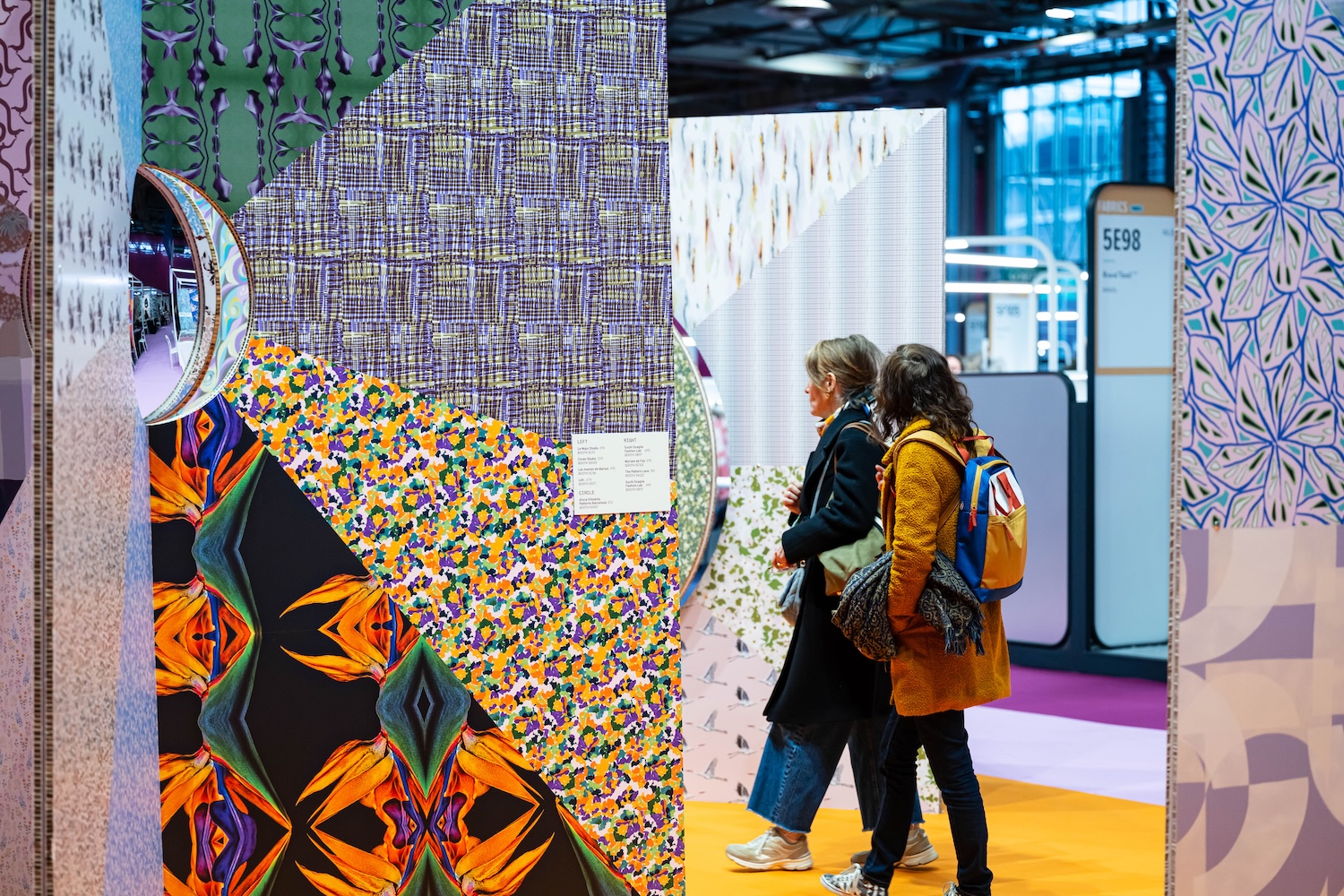
Technical high performance eco yarn spinners for sophisticated markets Included Birla Cellulose Cotton, Recycled yarn KS India, with open end dyed yarns for knitted and woven applications. Lenzing’s hugely successful EcoVero expansion, plant-based Naia cellulose yarn from Eastman, together with a host of recycled yarn from Turkey, China and India, including Ecotex Seawool from Taiwan.
Linen
Interest around linen has grown as its eco credentials and blends developed. The European Alliance Flax Linen and Hemp (ex CELC) showed its member companies diversifying and expanding scope, developing different constructions, for example terry, high quality pile and waffle. Natural Fiber Lithuania, specialists in growing and processing of raw hemp material to produce high-quality fabric, offer a printing service and motifs for clients, while databases can also be developed and extended.
Ecological renewable natural resources
PV’s view of the importance of renewable resources appeared on the Instagram initiative, walking round different areas with the viewer. The PV fashion team pointed out current renewable options available, reminding that only 1% involved textile to textile recycling. Recycled textile waste, also plants and fruits like banana and orange, can be used to advantage in different areas, as much as recycled polyester.
International Fashion Consultant Beryl Gibson said Premiere Vision was busier than for some time. PV was true to its stated aim; ‘ecological transition at the heart of the dialogues. Regeneration demands a collaborative approach to the natural world to avoid a catastrophic tipping point. A will to transcend the seasonal nature of fashion will be needed.’
PV Marketplace continues after the fair, with thousands of individual products selected by exhibitors.

Subscribe To Our Newsletter
Join our mailing list to receive the latest news and updates from our team.





















